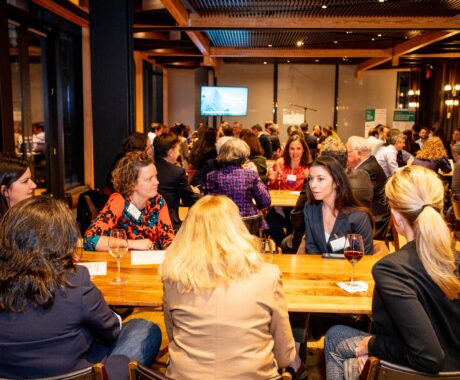The Hub and AOBA Metro Washington recently hosted a webinar on property-assessed clean energy (PACE) financing, an alternative financing option for energy efficiency projects, including projects to meet DC’s Building Energy Performance Standards (BEPS). The panel of experts explored the current trend of PACE, and how more owners are doing PACE deals as interest rates are rising and credit is tightening.
Attendees also learned the basics of PACE, including how it works, what are the advantages and disadvantages, the application process, and more. Below are a few takeaways and you can also watch the webinar recording to learn more.
Speakers
- Ronald Hobson, PACE Program Director, DC Green Bank
- Lisa Nordel, SVP PACE, Credit, Peachtree Group
- Kelli Brooks, Managing Director of Finance, Urban Atlantic
What is PACE financing?
PACE is a state-by-state financing mechanism that enables private lenders to finance building efficiency upgrades, renewable energy projects, and new construction of high-performance buildings, and then receive their loan repayment through long-term property tax assessment.
A local authority manages the program in each eligible state, and in the DC metropolitan area, PACE is available in Washington, DC, Maryland, and Virginia. In Washington, DC, the DC Green Bank is the PACE administrator, and panelist Ronald Hobson runs the program. Ronald works with many capital providers, including panelist Lisa Nordel with Peachtree Group, to finance eligible projects including lighting and electrical upgrades, building envelope, HVAC systems, water efficiency equipment, elevators, and associated soft costs. For building owners, such as panelist Kelli Brooks with Urban Atlantic, PACE is one tool in their toolbox for financing their capital stack, as Kelli noted, depending on how it achieves the goals of the project.
What is the PACE process?
The PACE loan process is similar to other financing. Lisa walked through the process, explaining that the lender will go through initial inquiry and due diligence, including underwriting and review of construction documents, to get to approvals and closing. Much of the documentation reviewed is typical information that a traditional lender would review.
The process varies when obtaining senior lender consent to having PACE financing on the property, reviewing closely the engineering report to vet the PACE eligible costs and any savings to investment ratio computations from the program, and preparing the loan documents on the program administrator’s documents. Ronald explained that projects should factor in about 3-4 weeks for DC’s PACE program loan approval process once the capital provider submits the documentation, though the timeframe can vary. Lisa and Ronald both indicated the capital provider and program administrator work closely together to move forward to closing.
What are some key considerations necessary to evaluate a PACE loan?
The panelists walked through several factors to consider when evaluating a PACE loan, including utility costs, lien priority, payment cycles, and other challenges and benefits.
Some of the benefits that Ronald shared are that PACE is cash neutral and measured through a savings-to-investment ratio where your savings are greater than your investment. PACE terms can last up to 30 years, whereas banks may go up to terms of 5-7 years. With rising interest rates, PACE is an attractive financing tool in the capital stack since it currently has lower interest rates than typical mezzanine financing. Kelli also noted that PACE can take the risk off the property owner and that lenders like the assurance of timely payments.
One of the main challenges with PACE is that senior lenders can be uncomfortable with the lien priority, which means that the PACE loan is paid back ahead of other mortgages, though Ronald noted that more banks are becoming comfortable as they are educated on the overall risk. Kelli emphasized that a building owner can play a role in educating existing lenders to bring them along.




